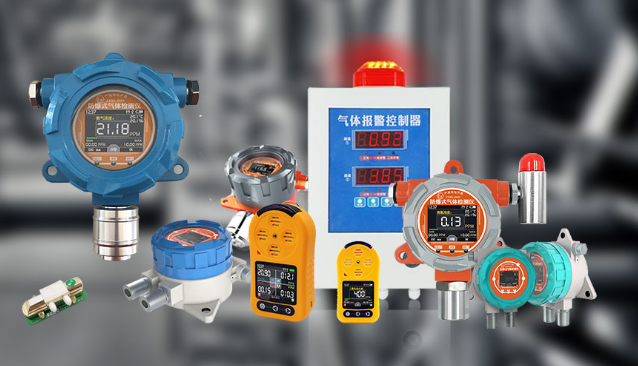What is a gas sensor
A gas sensor is an instrument used to detect the presence or concentration of gases in the environment. Depending on the concentration of the gas, the sensor generates a corresponding potential difference by changing the resistance of the material inside the sensor, which can be measured as the output voltage. From this voltage, the type and concentration of the gas can be estimated.
The type of gas the sensor could detect depends on the sensing material present inside the sensor. Normally these sensors are available as modules with comparators as shown above. These comparators can be set for a particular threshold value of gas concentration. When the concentration of the gas exceeds this threshold the digital pin goes high. The analog pin can be used to measure the concentration of the gas.
Different Types of Gas sensors
Gas sensors are typically classified into various types based on the type of the sensing element it is built with. Below is the classification of the various types of gas sensors based on the sensing element that are generally used in various applications:
Metal Oxide based gas Sensors.
Optical gas Sensors.
Capacitance-based gas Sensors.
Calorimetric gas Sensors.
Acoustic based gas Sensors.
Gas Sensor Construction Of all the above-listed types, the most commonly used gas sensor is the Metal oxide semiconductor based gas sensor. All Gas sensors will consist of a sensing element which comprises of the following parts.
Gas sensing layer
Heater Coil
Electrode line
Tubular ceramic
Electrode

The purpose of each of these elements is as below:
Gas sensing layer: It is the main component in the sensor which can be used to sense the variation in the concentration of the gases and generate the change in electrical resistance. The gas sensing layer is basically a chemiresistor which changes its resistance value based on the concentration of particular gas in the environment. Here the sensing element is made up of a Tin Dioxide (SnO2) which is, in general, has excess electrons (donor element). So whenever toxic gases are being detected the resistance of the element changes and the current flown through it varies which represents the change in concentration of the gases.
Heater coil: The purpose of the heater coil is to burn-in the sensing element so that the sensitivity and efficiency of the sensing element increases. It is made of Nickel-Chromium which has a high melting point so that it can stay heated up without getting melted.
Electrode line: As the sensing element produces a very small current when the gas is detected it is more important to maintain the efficiency of carrying those small currents. So Platinum wires come into play where it helps in moving the electrons efficiently.
Electrode: It is a junction where the output of the sensing layer is connected to the Electrode line. So that the output current can flow to the required terminal. An electrode here is made of Gold (Au –Aurum) which is a very good conductor.
Tubular ceramic: In between the Heater coil and Gas sensing layer, the tubular ceramic exists which is made of Aluminum oxide (Al2O3). As it has high melting point, it helps in maintaining the burn-in (preheating) of the sensing layer which gives the high sensitivity for the sensing layer to get efficient output current.
Mesh over the sensing element: In order to protect the sensing elements and the setup, a metal mesh is used over it, which is also used to avoid/hold the dust particles entering into the mesh and prevent damaging the gas sensing layer from corrosive particles.
Gas Sensor Working
The ability of a Gas Detector to detect gases depends on the chemiresister to conduct current. The most commonly used chemiresistor is Tin Dioxide (SnO2) which is an n-type semiconductor that has free electrons (also called as donor). Normally the atmosphere will contain more oxygen than combustible gases. The oxygen particles attract the free electrons present in SnO2 which pushes them to the surface of the SnO2. As there are no free electrons available output current will be zero. The below gif shown the oxygen molecules (blue color) attracting the free electrons (black color) inside the SnO2 and preventing it from having free electrons to conduct current.
Gas Sensor Working Principle
When the sensor is placed in the toxic or combustible gases environment, this reducing gas (orange color) reacts with the adsorbed oxygen particles and breaks the chemical bond between oxygen and free electrons thus releasing the free electrons. As the free electrons are back to its initial position they can now conduct current, this conduction will be proportional the amount of free electrons available in SnO2, if the gas is highly toxic more free electrons will be available.
 : +86 155 8830 2704
: +86 155 8830 2704 : jxdziot@gmail.com
: jxdziot@gmail.com
